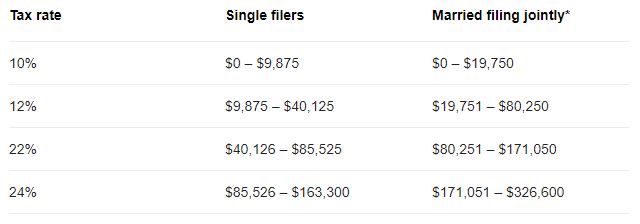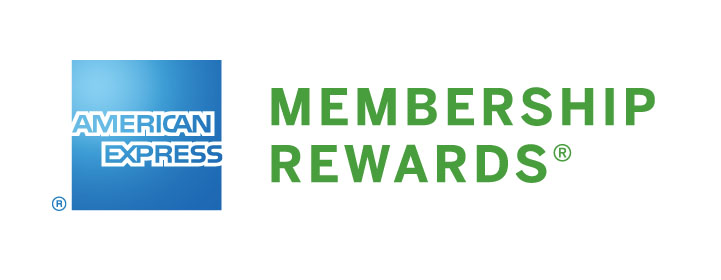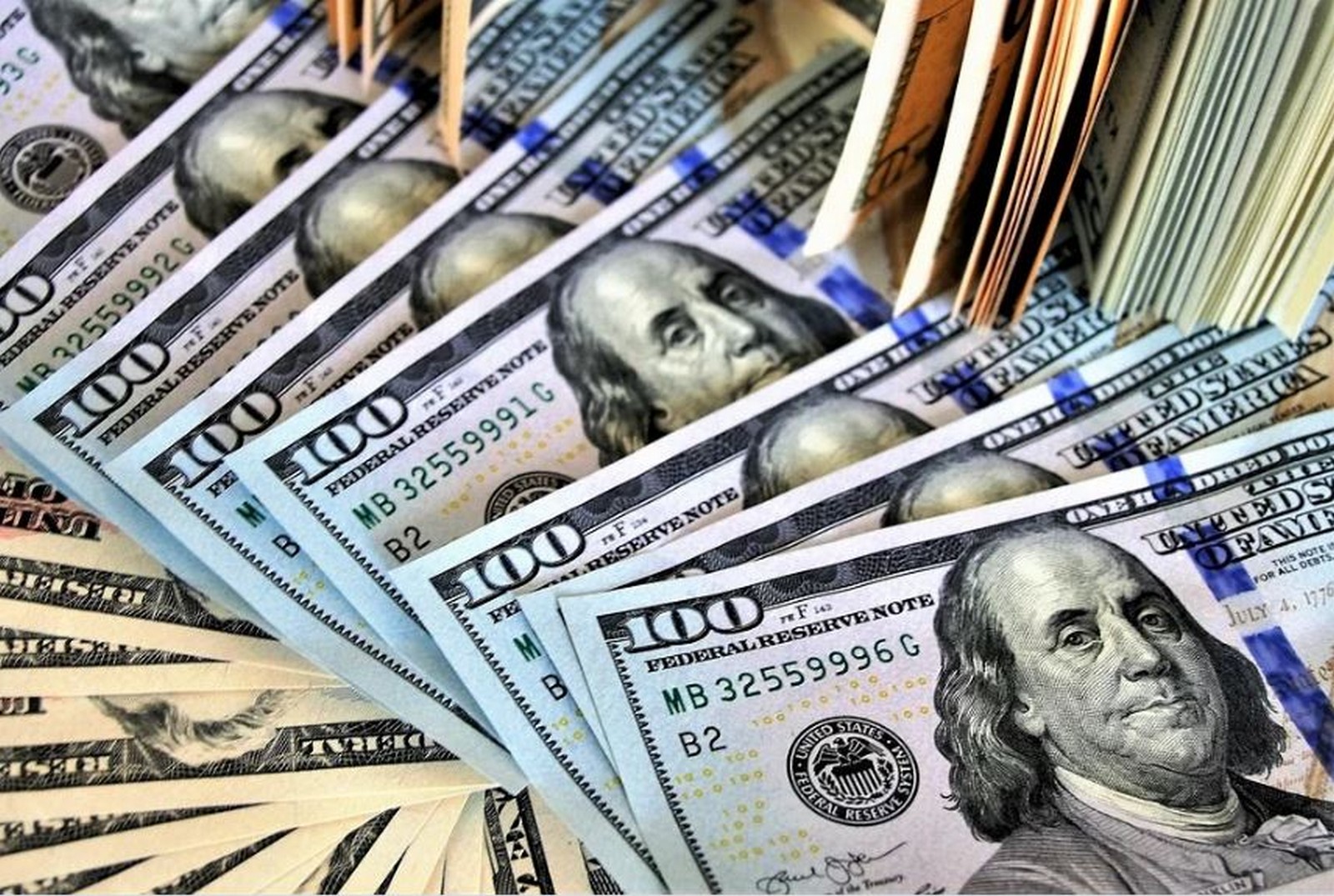
Increase Cash Back Rewards Rates by Saving More for Retirement
I have previously described my affinity for cashing out points so that I can travel exactly the way I want. Many are cashing out more now thanks to Chase’s Pay Yourself Back feature. Specifically, you can get a cash back bonus of up to 50% at grocery stores, dining, and home improvement stores with this feature. Currently, this promotion ends on September 30th. But what if you could permanently redeem at an increased rate across all banks which offer cash back? You can! Here’s how to increase cash back rewards rates by saving more for retirement.
Is This You?
In my first path to financial independence article, I described saving up to the matching amount in my employer-sponsored retirement plan (401k, 403b, etc) right out of college. While I was happy at the time with my contributions, looking back I wish I had saved more in the plan. Perhaps some of you would like to save more for retirement but have not due to other financial commitments, whether they are necessities or extra stuff.
Or maybe you have more bank points, frequent flyer miles, and hotel points than you can use for the foreseeable future. More and more are in this position due to COVID-19 current events. Regardless, it’s worth knowing what your opportunity costs are, especially in cash equivalents.

What Can You Do?
Of course, you can cut your expenses in order to save and invest more for retirement. Also, you can cash out credit card rewards to cover your everyday expenses. By using cash back rewards to cover more expenses, you can instead take the saved income and contribute it to your employer-sponsored retirement plan or traditional IRA. And here’s the key: those contributions are pre-tax and not subject to federal or state income tax in the year they were earned. In doing so, your cash back rewards rates have indirectly increased thanks to your pre-tax contributions to your retirement plan.
How It Works
Here are the basic steps to increasing your cash back rates while saving more for retirement.

Step #1. Understand Your Situation
Determine what you currently contribute to your pre-tax retirement plan. Let’s say Sally Taxpayer is single, makes $75,000 per year, and contributes $5,000 to her 401k. The 2020 maximum contribution limit for 401k’s and other retirement plans is $19,500. That means she can contribute up to $14,500 more of her “earned income” to her 401k. There are two ways to obtain earned income: work for someone who pays you or own/run a business or farm. Why is this important? Because only earned income can be contributed to these retirement plans. This also applies to traditional and Roth IRA’s. Therefore, you cannot directly contribute credit cash back rewards to retirement plans. Using the above example, Sally can contribute up to $19,500 total to her plan in 2020 since she makes at least that much in earned income from her job. It’s also important to note that total employee contributions plus the employer match cannot exceed one’s earned income; also, there are other high end limits.
I recommend you look at options for cutting expenses in order to free up money for higher retirement plan and IRA contributions. But let’s say Sally doesn’t have any other options for cutting expenses. Using the previous numbers, Sally can cash out up to $14,500 in credit card rewards to cover her normal expenses (mortgage/rent, groceries, utilities, etc) and shift those savings to her retirement plan contributions.
Taking into account Sally’s situation, any cash back rewards she uses for normal expenses would allow her to contribute additional pre-tax earnings into her retirement plan that otherwise would be taxed at 22% (even taking into account the $12,400 standard deduction). Essentially, in this example, her cash back rewards are worth 22% more. Of course, if you already have money set aside in a travel budget, you can shift that money in the same fashion and instead use points/miles to cover the travel.

Step #2. Cash Out Your Desired Points Currencies
Next, cash out the points currencies of your choosing. Here’s a sampling of cashout rates:
- Chase Ultimate Rewards: 1 point = 1 cent, currently up to 1.5 cents
- American Express Membership Rewards: 1 point = 1.25 cents for American Express Platinum Card for Schwab holders
- Citi ThankYou Points: 1 point = 1 cent for cashout via mortgage check or for Prestige cardholders
- Discover (via Miles card): 1 mile = 1 cent
- Other direct cash back rewards based on certain banks’ cards, including PenFed PowerCash Rewards, Amex Blue Cash, Amex Blue Business Cash, Citi Double Cash, Chase Freedom, etc.
Step #3. Use Cash Back Rewards to Cover Expenses
This one is fairly self-explanatory. After receiving your cash back rewards, apply these funds directly to your necessary expenses and bills. Keep records, of course, so that you can track how much extra you can contribute to your retirement plan. Additionally, I would like to reiterate again to additionally work to cut your expenses to allow more saving for retirement.
Step #4. Make Additional Retirement Plan Contributions
Based on your extra savings via cash back rewards and cost-cutting, make additional retirement plan contributions. Based on your cash reserves and the flexibility of your financial situation, Steps #2 through #4 can be conducted in any order and repeated at your convenience. The key is to line up all of these activities in the same tax year to avoid potential tax surprises.

Reflecting On Increased Cash Back Rewards Rates
In Sally’s situation, her per point cashout rates for Chase, Citi, Discover, and direct cash back cards increase from 1 cent to 1.22 cents. For Amex Membership Rewards, her per point cashout rate increases from 1.25 cents to 1.52 cents.
And it gets even better! This doesn’t take into account her state income taxes. So, the additional tax savings due to having a lower state taxable income can also be incorporated into the increased cash back. State income tax rates vary widely, and some states do not tax employment income, so ensure to use the proper rates for your situation.
Let’s now review the points-earning side. Consider the elevated cash back rates in conjunction with the credit cards you hold or aspire to obtain. Here are just a few examples for Sally’s situation (again, I’m not including any additional state income tax savings):
- Discover It Miles: 3% cash back becomes 3.66% cash back on all spend, uncapped
- Chase Freedom/Chase Ink Business Cash: 5% category cash back becomes 6.1% cash back; $1.5k quarterly Freedom cap, $25k cardmember year Business Cash cap
- Amex Gold: 5% grocery cash back (via Schwab) becomes 6.1% cash back, up to $25k spend annually
- Amex Blue Business Plus: 2.5% cash back (via Schwab) becomes 3.05% cash back on all spend, capped at $50k annually
- All 2% Cash Back Credit Cards (PenFed, Citi Double Cash, etc): 2% cash back becomes 2.44% cash back, uncapped
Plus All of the Usual Investment and Tax Benefits
Besides increased cash back rates, you are enjoying investment and tax benefits of contributing more to your pre-tax retirement plan. Your investments grow tax-deferred, further contributing to potential exponential growth of your investments over the long term. Also, you are maximizing the pre-tax nature of the contributions today and have bought time to optimally determine how and when those investments are taxed. The taxable events could be when you are retired, or in other situations when your tax liability is low or zero.

Increase Cash Back Rewards – Other Considerations
Of course, this all presumes that a person is not already contributing the maximum to his/her pre-tax retirement plan. Also, you can apply this same process to maxing out your annual Roth IRA contributions, but these contributions will not be at the elevated cashout rates since those contributions are after-tax. But, in that case, the growth is all tax-free. In a sense, this is a double-dip, since you are indirectly using tax-free money (cash back rewards) to enable increased contributions of earned income to a tax-free growth account (Roth IRA). And if you already max out your retirement plan and Roth IRA contributions, you can always use your cash back for investing via your brokerage account.
To be clear, this overall process is not for everybody. Based on your goals and guiding principles, you may be more interested in redeeming your rewards (points, miles, or cash back) for travel. But if you are interested in your credit card rewards enabling more saving and investment opportunities, I think this play is worth consideration. Also, if you have points coming out of your ears, why not find ways to maximize cash back?
Finally, at the risk of stating the obvious, do crunch the numbers for your specific situation. I have hit the main points in this article but cannot possibly take into account every possible personal consideration. And, of course, use the appropriate updated tax rates, contribution limits, and other related information as you make your calculations.
Increase Cash Back Rewards – Conclusion
I’m writing this now because I wish I took advantage of this opportunity right out of college (or before). To many of you, this play to increase cash back rewards rates may not apply. But if this benefits just a handful of people (or maybe just even one person) out there, this has been a worthy exercise. What other ways have points and miles enabled you to save and/or invest more?



It’s a little disingenuous to say credit card rewards are suddenly worth more because they are put into a tax advantaged account. You can kind of trick yourself into believing they are if all your earned income is going hand to mouth and you have no absolutely no dollars left to save except for your rewards dollars. However, that’s just mental gymnastics because you can instead “spend” a reward dollar and then “save” an earned dollar in your head without changing anything in reality.
Credit card rewards on spend are not considered taxable and thus don’t really have a pretax/posttax value; they’re automatically posttax. Getting $1 in rewards is instantly better than getting an extra $1 on your paycheck.
It just might be a good savings vehicle because having categorized sources of “income” can help people stick to savings plans. But if savings is your goal, associating credit card spending with retirement savings can be dangerous.
You actually aren’t putting the actual credit card awards into the savings vehicle. You have to take the step to adjust your earned income withholdings and have that flow into the account. You then use the credit card rewards cash as replacement income (untaxed).
no different than using any other dollar in your bank account. this does not magically increase the value of your rewards dollar. Making a deductible contribution versus spending is the key here and that exists with or without rewards.
What you described is exactly what’s happening in reality and in the eyes of the IRS so the rewards dollar doesn’t change anything with your taxes, you just elected to increase your 401k contributions with your employer.
If the incremental benefit, allows to save an equivalent amount that you would not have been able to save then I think the tax benefit you get is new money. If you just spent that money on something else, you would be out that incremental tax benefit. That gap of “value” is what I think we are discussing here
Yes rewards are an incremental source of money. They do not give you an incremental tax benefit no matter what you do with them. It is always your earned dollar being deducted in a 401k no matter how you want to think about it. If for whatever reason you are able to contribute more earned dollars to your 401k it has no bearing on the value or source of other dollars. Once dollars are in your bank account they are fungible.
To clarify, if $5 in rewards that is spent on groceries allows you to contribute $5 more dollars to your 401k, you still get the same tax savings. So that means even spending it on groceries gives Sally the 22% which makes the whole calculation a moot point. All that this article is really saying is that 401ks can make your money go further and you should consider contributing as much as you can (whether that’s because rewards enable you to or otherwise).
Derek,
As I mentioned in the article, this strategy isn’t for everybody. Regardless, considering options for responsible spending, welcome offers, cash redemptions, and retirement savings isn’t necessarily dangerous, in my opinion. But different strokes for different folks!
Understood, my main point is that you’re not actually increasing the value of these rewards by putting them into a 401k. You’re always deducting earned dollars in a 401k, or there would be no deduction. It’s just a trick of the mind to think you are giving up your deduction on your earned dollar and increasing the value of your reward dollar.
Derek,
Let’s say Sally spent that $1 reward on travel. Great – if that was her primary reward goal. Back to the original example, if she decided to use that $1 reward for bills, she would free up $1 more for pre-tax contributions to her retirement plan (since she didn’t have any other means to contribute). That $1 saves $0.22 in taxes, thereby making the original $1 reward worth 22% more. From my perspective, that’s (indirectly) making the $1 cash back reward worth $1.22, rather than mental gymnastics or a disingenuous statement. But again, just my opinion, and we are all entitled to them.
I understand the advice and not disagreeing it is worth considering. But the true advice in the example you just gave is that instead of traveling you should save in your 401k. If someone only considered points for expenses that they would not normally pay for then it is a good point to have them realize the opportunity cost of the points in cash or bills. But you’re combining two independent steps (spend points on cash/necessities/things you would spend on anyways vs spend on non-essentials you wouldn’t pay for in cash and contribute to 401k vs spend/save in posttax dollars), which is the misleading part (I apologize if disingenuous implied something intentionally inaccurate, which was not what I meant).
That a dollar in the bank can be put in a 401k or not, with the same tax consequence regardless of where it came from, is a financial fact and not an opinion. Whether you should do that or not is an opinion.
Derek
Using miles and points or cashback increase the money available to you. If you used a debit card or didn’t get welcome offers etc. that money wouldn’t be available. This actually increases your earnings without the required tax burden of more earnings. I don’t see why you have the disconnect but without the credit card rewards there would not be extra money available to invest. Then if you decide to invest that surplus of money you get additional tax benefits…benefits you wouldn’t get unless you had that extra money and unless you actually decided to invest it.
The part that I object to is not that credit cards can give you more cash that you can decide to do with.
I object to saying 2% cash back is actually worth 2.44% cash back. While that may be true for Sally, that’s true of any dollar Sally owns. You might as well write an article about how that $20 she found in her pocket can be $24.44, or that extra amount she’s keeping in her bank account can be grown by 22% instantly. Which from this perspective all of which is true, but then you’re just writing a retirement savings article with nothing to do with credit card rewards. It’s misleading to say this dollar is somehow 22% more valuable than any other dollar you own.
To clarify, the whole value of articles like this giving a redemption value to points is for people to weigh redemption options. This makes someone think that redeeming points for cash is somehow a better option than redeeming it for travel expenses they were planning on spending anyways. It still ends up as cash in their bank that they can put into an IRA or not, so you either need to make it clear this 22% option is always an option for you, or it doesn’t need to be considered here. Otherwise it is double counting. This is not a disconnect for me, these are well understood and well defined concepts in finance, economics, and financial planning with money being fungible and all economic choices having an opportunity cost.
It might be going over some heads but that’s fine. If it convinces people to save more than they otherwise would, that’s probably a good thing.
Derek,
To be clear, I don’t presuppose to know anyone’s goals with their points/miles. Indeed, I encourage each individual to identify his/her own goals and earn/redeem accordingly, which I addressed in this previous article.
I feel I am having a hard time getting this across. I’m not saying the article is indicating any goal is more worthwhile than another goal. I’m strictly talking about the math of saying 2% cashback is actually 2.44% cashback for Sally. If one were to make apples to apples comparisons to a travel redemption that they were planning on anyways, this is incorrect. That’s all my point is. As you point out, we don’t want to assume anyone’s goals which is why it’s important those numerical figures are directly comparable so people can make the choice themselves.
I appreciate the discussion about savings, tax advantaged retirement vehicles, and other options for points on the sideline.
The first sentence answers your problem on the 2nd part. He was opening people up to the idea of using credit card rewards to boost retirement savings. If it increases their savings (using money they wouldn’t have otherwise) then it in fact lessons their tax liability either now or gives them tax benefits later. Which may only be possible with credit card rewards. It was meant to produce thought and conversation not to be an investment manifesto.
Hopefully some people are now open to looking at more retirement savings with points that are sitting on the sidelines etc. Especially with all of these cancellations and the lack of travel right now.
I do appreciate the discussion for sure though Derek. I think it is a good one to have.
As a retiree, I did not have Roth 401 tools available to me. I did the full allowable 401K stuff and company matched stuff. In hind sight, I wish I had paid taxes on those saved earnings back then. I had plenty of deductions, mortgage, kids, etc and was able to keep a low effective tax rate. The non taxed portion would not have changed my tax bracket. It sucks big time now to make a draw against a 401K and now pay taxes when I have no mortgage, no kids, and alot of my tax advantages taken away. I suspect in the future taxes will go up and there will be few credits or strategies to avoid those withdrawal taxes. My advice is pay taxes up front, save more than you think you can, and invest aggressively.
Byron,
Interesting perspective! I would also say you have a “good” problem here – but definitely valid. Thanks for bringing up a different angle here.
I definitely agree that the assumption of lower effective tax rates in retirement is questionable. I expect to pay much higher rates in retirement than I have in my working years. This uncertainty means most folks should consider some after-tax retirement investing. Remember that tax advantaged retirement plans are relatively new (I’m a late Boomer). Further, the plans are designed for the maximum benefit of folks in high marginal brackets.
Roths are a great deal without age restrictions and RMD. Just need enough “earned income” to qualify.
I think that is something to consider when deciding on going the Roth IRA or regular IRA route for sure (assuming you are eligible for both options). Roth if taxes will be higher or traditional if you think they will be lower.
A clarification to the numbers you present. Sally PLUS her employer’s contribution cannot exceed $19,500. This needs to be checked so you don’t overcontribute and have the IRS force you to take out an overage.
Glenn,
Actually, Sally can contribute $19,500, not including her employer’s contributions. But there are other high end limits ($57k for 2020) for the total (employee contributions and employer match). You can read more here. I’ve updated the article to reflect this.
I believe this is incorrect. The maximum $19,500 is from your own contribution.
https://www.investopedia.com/ask/answers/100314/does-my-employers-matching-contribution-count-towards-maximum-i-can-contribute-my-401k-plan.asp#:~:text=The%20short%20and%20simple%20answer%20is%20no.,%2C%20respectively%2C%20for%202019).
I have been doing this for years. Another angle on this, presuming you budget for travel each year and consider travel a mandatory expense (e.g. meaning you are going to spend the money no matter what) is replacing paid travel with points travel and intentionally moving your afore said travel budget to a retirement account. While the cashback example is a little less abstract, imho, for those that have mandatory annual expenses in travel leveraging points (that can’t be cashed out, or points that could be used at a higher rate than the cashout rate) in this way works too to double dip and build your retirement accounts too.
Shane,
Great thoughts. Thanks for reading!
yeah exactly this point. replacing expected travel expenses with points has the exact same benefit (you are able to take the cash you saved to an IRA/401k for deductions). And you can “double dip” because you can often get a better value for travel redemptions than for cash. So the 22% bonus is there either way if you would have paid for that travel anyways. choosing to spend on discretionary travel should always be weighed against the retirement option, whether it be points or dollars.
That is assuming that there was a travel budget though. If I didn’t have miles and points I would travel much less. So I am not replacing my travel budget with points but rather making it go further. I think it totally depends on the situation but I will have Benjy add it a part about it being possible to do the same thing if you are saving money you would normally earmark for travel.